Refine search
Actions for selected content:
1550 results in Control systems and optimization
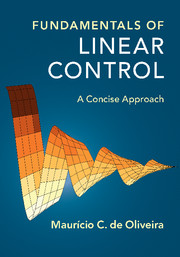
Fundamentals of Linear Control
- A Concise Approach
-
- Published online:
- 01 February 2019
- Print publication:
- 04 May 2017
-
- Textbook
- Export citation
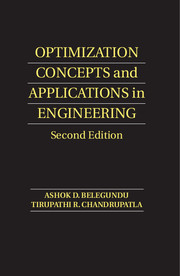
Optimization Concepts and Applications in Engineering
-
- Published online:
- 28 May 2018
- Print publication:
- 28 March 2011
-
- Book
- Export citation
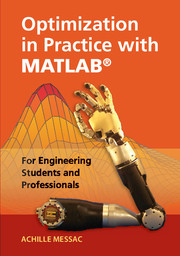
Optimization in Practice with MATLAB®
- For Engineering Students and Professionals
-
- Published online:
- 28 May 2018
- Print publication:
- 19 March 2015
-
- Textbook
- Export citation
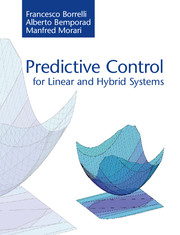
Predictive Control for Linear and Hybrid Systems
-
- Published online:
- 28 May 2018
- Print publication:
- 22 June 2017
-
- Textbook
- Export citation
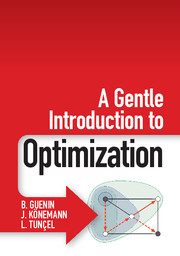
A Gentle Introduction to Optimization
-
- Published online:
- 28 May 2018
- Print publication:
- 31 July 2014
-
- Textbook
- Export citation
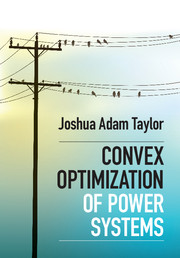
Convex Optimization of Power Systems
-
- Published online:
- 28 May 2018
- Print publication:
- 12 February 2015
-
- Textbook
- Export citation
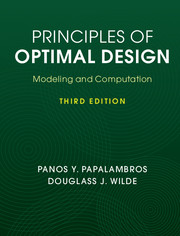
Principles of Optimal Design
- Modeling and Computation
-
- Published online:
- 28 May 2018
- Print publication:
- 09 January 2017
-
- Textbook
- Export citation
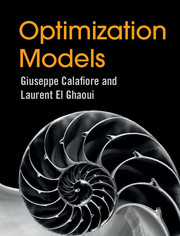
Optimization Models
-
- Published online:
- 28 May 2018
- Print publication:
- 31 October 2014
-
- Textbook
- Export citation
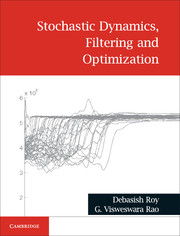
Stochastic Dynamics, Filtering and Optimization
-
- Published online:
- 08 February 2018
- Print publication:
- 01 January 2017
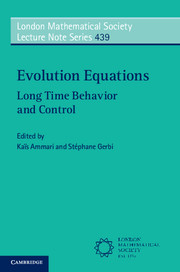
Evolution Equations
- Long Time Behavior and Control
-
- Published online:
- 25 October 2017
- Print publication:
- 05 October 2017
List of Contributors Present at the Summer School
-
- Book:
- Evolution Equations
- Published online:
- 25 October 2017
- Print publication:
- 05 October 2017, pp ix-x
-
- Chapter
- Export citation
Frontmatter
-
- Book:
- Evolution Equations
- Published online:
- 25 October 2017
- Print publication:
- 05 October 2017, pp i-iv
-
- Chapter
- Export citation
5 - About Least-Squares Type Approach to Address Direct and Controllability Problems
-
-
- Book:
- Evolution Equations
- Published online:
- 25 October 2017
- Print publication:
- 05 October 2017, pp 118-136
-
- Chapter
- Export citation
7 - Ill-Posedness of Coupled Systems with Delay
-
-
- Book:
- Evolution Equations
- Published online:
- 25 October 2017
- Print publication:
- 05 October 2017, pp 151-160
-
- Chapter
- Export citation
6 - A Note on the Asymptotic Stability of Wave-Type Equations with Switching Time-Delay
-
-
- Book:
- Evolution Equations
- Published online:
- 25 October 2017
- Print publication:
- 05 October 2017, pp 137-150
-
- Chapter
- Export citation
3 - A Null-Controllability Result for the Linear System of Thermoelastic Plates with a Single Control
-
-
- Book:
- Evolution Equations
- Published online:
- 25 October 2017
- Print publication:
- 05 October 2017, pp 77-89
-
- Chapter
- Export citation
Contents
-
- Book:
- Evolution Equations
- Published online:
- 25 October 2017
- Print publication:
- 05 October 2017, pp v-vi
-
- Chapter
- Export citation
Preface
-
- Book:
- Evolution Equations
- Published online:
- 25 October 2017
- Print publication:
- 05 October 2017, pp vii-viii
-
- Chapter
- Export citation
4 - Doubly Connected V-States for the Generalized Surface Quasi-geostrophic Equations
-
-
- Book:
- Evolution Equations
- Published online:
- 25 October 2017
- Print publication:
- 05 October 2017, pp 90-117
-
- Chapter
- Export citation
9 - Mixing for the Burgers Equation Driven by a Localized Two-Dimensional Stochastic Forcing
-
-
- Book:
- Evolution Equations
- Published online:
- 25 October 2017
- Print publication:
- 05 October 2017, pp 179-194
-
- Chapter
- Export citation
